TCP and IP are two seperate protocols. IP (Internet Protocol) is a network layer protocol, while TCP (Transmission Control Protocol) is a transport layer protocol. Every computer and network device attached to the Internet has at least one IP address. For example, the IP address of this web server is 66.37.153.81. Then, within each of those IP addresses, each computer and network device will have a number of TCP ports. For example, the web server software on this web server responds on TCP port 80 and the mail server software Read More
What is a Smart Antenna?
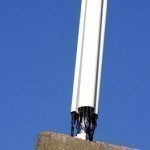
A smart antenna is one that transmits or receives multiple radio frequencies at once. Smart antennas increase data transfer rates and reduce errors by handling several copies of the same information. Conventional antenna systems consist of one antenna that serves as a transmitter and one that serves as a receiver. This is starting to change, however, as smart antenna systems are introduced. The three most common smart antenna systems are 1) SIMO (Single Input Multiple Output), in which one antenna is used as the transmitter and two or more are Read More
How to Build a USB WiFi Antenna
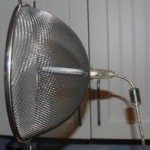
A USB WiFi antenna is a device that provides a computer with access to the Internet when in range of a WiFi access point. It also refers to a USB-based wireless adapter that also provides a computer with Internet access but connects to specific wireless routers rather than public WiFi access points. USB WiFi antennas connect to a computer via a male-to-female USB connection and depend on Plug and Play technology to automatically install themselves and run on the host machine. How USB WiFi Antennas Work A USB WiFi Read More
File Sharing
A common practice in modern society is the use of file sharing programs and applications. These file sharing programs have been shrouded in controversy, scrutiny, and criticism since their inceptions. Despite that, however, file sharing programs are used by millions of people worldwide on a daily basis and that number is only growing. This article will examine what exactly file sharing is and explore some of the most popular P2P programs and file hosting sites that support the file sharing community. What is File Sharing File sharing involves many different Read More
DSLAM (Digital Subscriber Line Access Multiplexer)
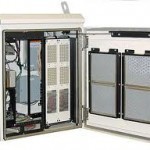
Faster connections to the Internet from phone lines are possible through a Digital Subscriber Line Access Multiplexer (abbreviated to DSLAM). The role of this network device is located in the telephone exchanges of providers for the services. The service works by taking advantage of the multiplexing techniques used to connect several Digital Subscriber Lines to a high speed connection which they share. These can be placed along remote areas to provide DSL services to once out of reach locations. These additions may be costly to the telephone companies, but it Read More
How to Use Ping to Test a Network
The following steps elaborate on how to use the Ping utility to perform progressively more distant tests on network connectivity. Ping the Loopback Address – Type Ping 127.0.0.1 Successfully pinging the loopback address verifies that TCP/IP is both installed and configured correctly on the local client. If the loopback test fails, it means IP stack is not answering. If any TCP drivers get corrupted, the network adapter is not functioning properly, or any other service is interrupting IP , then lack of response might occur. Open event viewer and look Read More
ICMP (Internet Control Message Protocol)
ICMP is the Internet Control Message Protocol. ICMP is a complementary protocol to IP (Internet Protocol). Like IP, ICMP resides on the Network Layer of the OSI Model. ICMP is designed for sending control and test messages across IP networks. Unlike the Transport Layer protocols TCP (Transmission Control Protocol) and UDP (User Datagram Protocol) which operate on top of IP, ICMP exists alongside IP. The ability to understand ICMP is a requirement for any IP-compatible network device. However, many security devices such as firewalls block or disable all or part Read More
Modem Commands
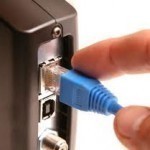
Modem Command Function AT Command line prefix. The ATtention command precedes all other commands listed below except for A/ and the escape code. For example, the command DT would be typed ATDT. A/ Repeat last command(not to be preceded by AT) A The modem is set to answer mode and goes offhook immediately. Answer without waiting for ring. Bn Bell mode – set 1200 bps protocol compatibility Selects V.22 or Bell 212A in the 1200bps mode. n=0, CCITT V.22 with 2100Hz Answer Back Tone. n=1, Bell 212A with 2225Hz Answer Read More
Routing Information Protocol
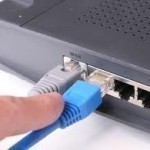
The Routing Information Protocol (RIP) is the IGP standard protocol that is used on Local Area Networks (LANs). It helps to ensure a higher degree of network stability by quickly re-routing network packets if one of the network connections goes offline. When the RIP is active on a network, users experience little to no service interruptions due to single router, switch, or server outages if there are sufficient network resources available to continue routing network traffic. When was the Routing Information Protocol Invented? C. Hedrick of Rutgers University invented the Read More
BOOTP
BOOTP is the Bootstrap Protocol. The BOOTP protocol is utilized by diskless workstations to gather configuration information from a network server. The information provided by the BOOTP protocol is: The IP address which should be utilized by the diskless workstation The IP address of a server which will provide an Operating System image for the diskless workstation The filename of an Operating System image which the diskless workstation should boot BOOTP workstations are identified by their MAC addresses. The BOOTP protocol utilizes UDP ports 67 and 68. Additional Reading on Read More


Share on: